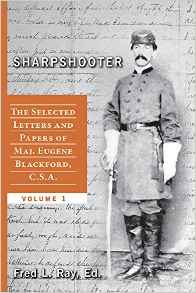Engineering Victory: The Union Siege of Vicksburg by Justin Solonick. Southern Illinois University Press, 2015. Cloth, ISBN: 978-0-8093-3391-2. $37.50.
 On July 4, 1863, after enduring a 47-day siege, Confederate forces under the command of Major General John C. Pemberton surrendered Vicksburg to a federal force under Union Major General Ulysses S. Grant in one of the most spectacular events of the Civil War. The campaign for the river fortress is a well-trodden path for scholars, and countless books and articles already exist covering virtually every aspect of the campaign and its personalities. One can be forgiven for asking if another work on Vicksburg is needed or necessary. In the case of Justin Solonick’s Engineering Victory: The Union Siege of Vicksburg, the answer is, happily, yes.
On July 4, 1863, after enduring a 47-day siege, Confederate forces under the command of Major General John C. Pemberton surrendered Vicksburg to a federal force under Union Major General Ulysses S. Grant in one of the most spectacular events of the Civil War. The campaign for the river fortress is a well-trodden path for scholars, and countless books and articles already exist covering virtually every aspect of the campaign and its personalities. One can be forgiven for asking if another work on Vicksburg is needed or necessary. In the case of Justin Solonick’s Engineering Victory: The Union Siege of Vicksburg, the answer is, happily, yes.
Professor Solonick’s work offers the first detailed, single-volume study of the siege of Vicksburg. Instead of covering the entire campaign for the city, Solonick places a narrow focus on the federal army and the actual siege techniques it used. While some might argue that such a work detailing trench construction and artillery emplacements would be tedious, the opposite is true. The book is both insightful and important to our understanding of why the federals were finally successful in forcing a Confederate surrender.
Dr. Solonick points out that even though the Union Army of the Tennessee had only a handful of trained engineer officers (the exact number is unclear), these men were able to manage successfully a fifteen-mile circumvallation of the formidable rebel works. Covering a rough terrain of hills and ravines with a soil prone to erosion, the federals found the approaches to the Confederate lines difficult if not impossible to cross, especially under heavy musketry and artillery fire. Indeed, the federals tried and failed to assault the works. Ultimately, a siege proved the only option. Solonick details how the Union forces, under the direction of the engineers, methodically dug approach trenches that gradually brought Union artillery and sharpshooters ever closer. Unable to fire at the digging federals because of sustained fire from marksmen, the Confederates watched as the Union positions crept nearer. Eventually, the Union forces were in position for a close assault. This assault did not come, however, because Pemberton finally surrendered. While Solonick does not downplay the importance of the garrison’s lack of food or the demoralization of knowing that no outside Confederate force would lift the siege, he posits that it was the methodical federal approach to a position for a successful storming of the Confederate lines that proved the key factor in Pemberton’s decision to surrender. In essence, Solonick challenges traditional views of the siege by asserting that instead of being starved out, the rebels were finally dug out.
The author is perhaps a bit overzealous in his contention that it was the ingenuity of the Midwestern soldiers in the Army of the Tennessee, with their remarkable ability to adapt the ideas of the few professional engineers, which led to the city’s eventual fall. Worse yet, Solinick claims that the “can-do attitude” they possessed made them unique compared to their federal counterparts in the Eastern Theater and, subsequently, more successful. This assertion borders on hyperbole. Finally, his position that the federal soldiers from the Western Theater were special and that they were the ones who won the war neglects too many factors to be credible. To be sure, the Army of the Tennessee was an excellent fighting force. However, given the resources available to the Union forces, the quality of Union leadership under William T. Sherman and Ulysses S. Grant, and the incompetence of Confederate leaders such as Jefferson Davis, John C. Pemberton, and Joseph E. Johnston in allowing Pemberton’s army to become trapped in the first place, it appears that any federal army properly led would have been able to take Vicksburg.
Solinick also claims that, in the case of Vicksburg, the federal engineers and the men they directed interwove traditional siegecraft with their own inventiveness to effect a Union victory. He views this as a testimony to Midwestern superiority. Again, the author is overstating the adaptability of this particular group of soldiers. In every war throughout history, soldiers have engaged past strategies, tactics, and military technology and adapted them to their situations. In this regard, the Union force at Vicksburg was, indeed, successful—but not unique. Their victory can more easily be attributed to common sense, engineers trained at the United States Military Academy, a premier engineering school, and solid leadership at all levels in the Army of the Tennessee. The author’s attempt to build a “mystique of the [M]idwesterner” does not convince.
Still, Solinick’s account of the siege and the Union efforts to counter the Confederate works is cogent and effectively presented. He concludes with a look at the surrender and goes beyond to place his work within larger context. In an impressive bibliographic essay, Solonick touches on the hotly debated topic of whether the American Civil War was the first modern war or the last of the Napoleonic wars in terms of tactics, especially in regard to field fortifications. He utilizes his own study of the siege of Vicksburg to argue that the war was a transitional conflict with its own distinct nature, not the last Napoleonic war nor the first modern war.
Overall, the work is well documented and well researched. It is a solid study and will be of interest both to enthusiasts and to students studying the war’s Western Theater, the Vicksburg Campaign in particular, and the Civil War in general.
Dr. John D. Fowler is the B.J. and Dicksie Bandy Chair of History at Dalton State College and Executive Director of the Bandy Heritage Center for Northwest Georgia.




